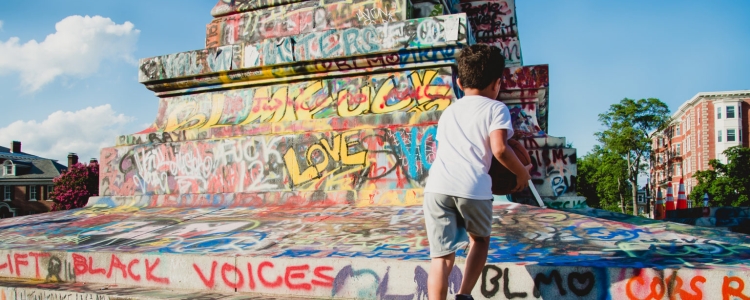American Civil War Monuments
Commemorative Cultures is a digital project that maps and interprets American Civil War monuments around the world.

Debates about the commemoration of the American Civil War began in 1861. Those debates have continued ever since. Citizens from across the United States and beyond have struggled to find adequate ways of remembering the war’s bloodshed, and of addressing the meaning of Emancipation after the conflict ended. The monuments created in the war’s wake tell different stories about this conflict. Some celebrate Union victory and the coming of Emancipation; others, such as those glorifying the Confederacy, refuse the reality of defeat.
Commemorative Cultures, established by Dr Kristen Treen of the School of English, explores the impact that these narratives still have today by reanimating the questions that brought them into being. What makes an effective monument? What function should it serve? Who should it remember, and how?
This project uncovers the social and cultural history of monuments and acknowledges their transformative force. It endorses a creative but critical engagement with American Civil War Monuments, acknowledging that many monuments, particularly those honoring the Confederacy, inflict harm and promote white supremacy in public space. Through the mapping of monuments, case studies, and educational materials, the project aims to document diverse forms of commemorative expression relating to the civil war and it invites participation from readers. More information can be found on the project website.
American Civil War Monuments: Conflict, Movement, Solution? by Dr Kristen Treen